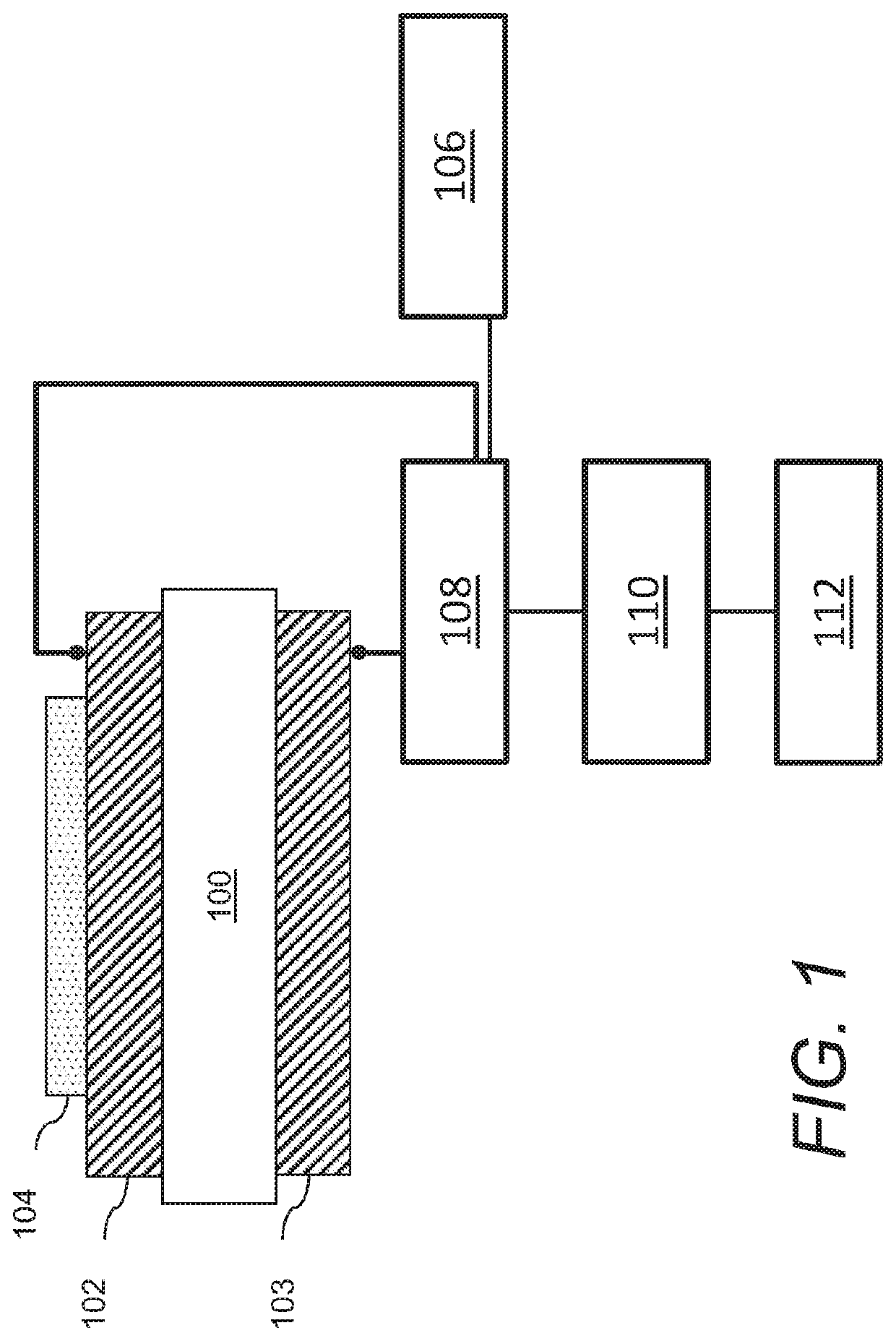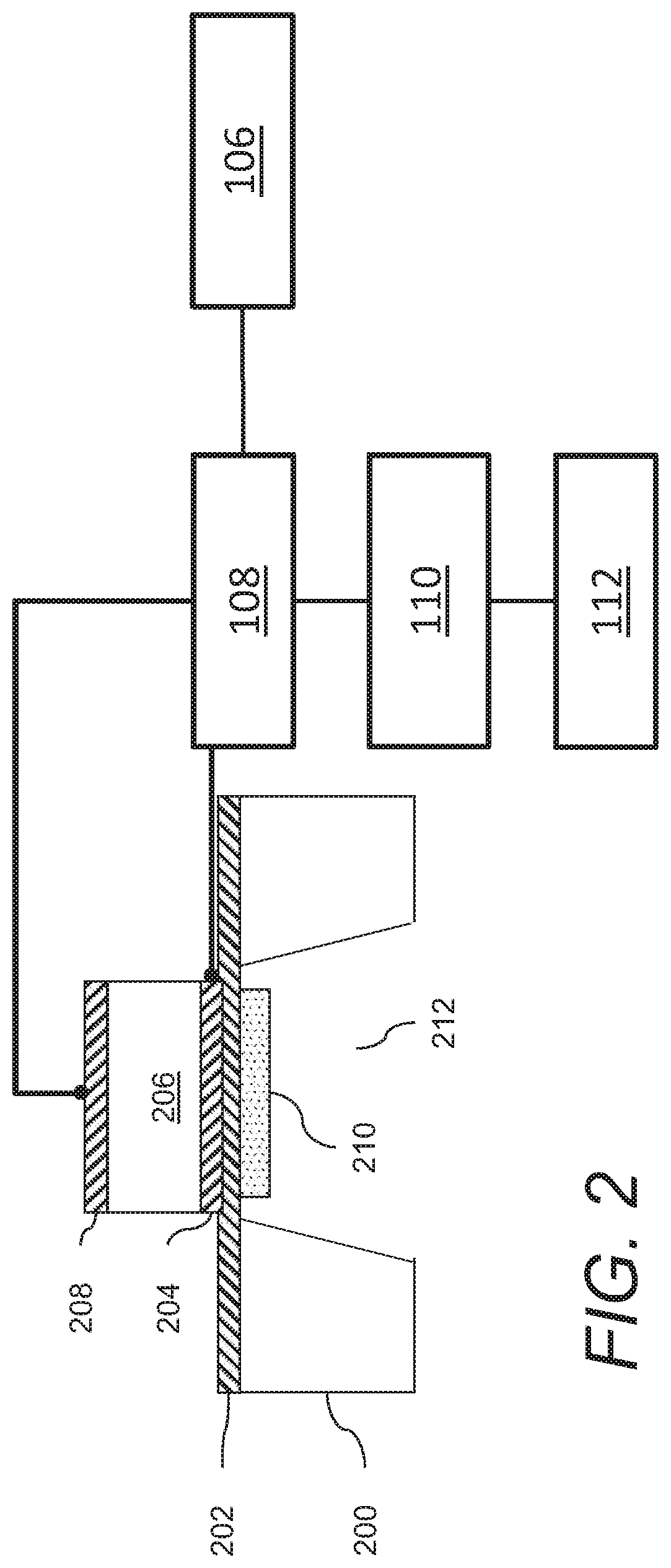Acoustic wave sensors and methods of sensing a gas-phase analyte
a technology of gas-phase analyte and sensor, which is applied in the direction of instrumentation, fluid analysis using sonic/ultrasonic/infrasonic waves, material analysis, etc., can solve the problems of reducing and affecting the sensitivity of future analyte exposur
- Summary
- Abstract
- Description
- Claims
- Application Information
AI Technical Summary
Benefits of technology
Problems solved by technology
Method used
Image
Examples
synthetic example 1
[0110]A 4-liter cylindrical reactor was charged with 485.010 g diphenylene oxide bis(triphenylcyclopentadienone) (DPO-CPD), 27.370 g of 3,5-diethynylbenzoic acid (DEBzOH), and 2422 g of γ-butyrolactone (GBL) at room temperature. The top of the flask was then equipped with a dry ice condenser, a thermocouple with a temperature controller, N2 inlets, and a stir system. The reactor was placed into a fitted heating mantle. The system was evacuated and purged three times with N2 to remove air from the vessel, which was subsequently blanketed with a constant flow of N2. The reaction system was then heated to an internal temperature of 135° C. After 1 hour, the system was allowed to cool to 90° C., followed by adding a second aliquot (27.780 g) of DEBzOH to the flask, together with an additional 300 g of GBL. The reaction mixture was again heated to 135° C. and kept at this temperature for 1 hour. The system was again allowed to cool to 90° C., followed by adding a third aliquot (27.110 g,...
synthetic example 2
[0111]DPO-CPD (109.42 g) and 1,3-diethynylbenzene (18.34 g) were added to a 1 L OptiMax reactor (glass lined, with TEFLON™ fluoropolymer drainage plug). Ethoxybenzene solvent (309 g) was added to form a deep maroon heterogeneous mixture. The reactor was transferred to an OptiMax Synthesis Workstation and sealed under an atmosphere of nitrogen gas. To the reactor top were affixed a stirring rod with a 4-paddle stirrer (elevated to 1 cm from the reactor bottom), a water-cooled reflux condenser, an internal thermocouple (placed at the median depth of the mixture, radially disposed halfway between the stirring shaft and the reactor wall), and a 1 cm baffle (placed perpendicular and adjacent to the outer wall of the reactor). The reactor was set to an internal temperature of 25° C. and stirring was initiated at 100 rpm to mix the heterogeneous contents. After a 30 minute equilibration period at 25° C., the reactor was warmed at a rate of 1° C. / min. until reaching an internal temperature ...
synthetic example 3
[0112]20.0 g THF solvent was added to a 100 ml round bottom 3-neck flask. The flask was then heated and maintained at 66° C. with stirring. 16.0039 g maleimide, 4.0442 g 2-hydroxyethyl methacrylate (HEMA) and 30.0350 g of THF were added to a glass bottle. The bottle was gently shaken to provide a uniform solution, and was then placed in a water-ice bath to reach temperature equilibrium with the bath. 0.6214 g of V-65 azo initiator (Wako Specialty Chemicals) was added to the bottle. The bottle was vigorously shaken to dissolve the initiator and the bottle was then placed back in the bath. The monomer / initiator solution was fed into the flask at a rate of 250 l / 23 sec using a Hamilton Microlab 500 syringe delivery system. The flask was maintained at 66° C. for an additional 2 hours after completion of the monomer / initiator solution feed. 27.3510 g of ethyl lactate was added to the flask to dilute the polymer solution. The polymer solution was transferred to a 250 mL single neck flask ...
PUM
| Property | Measurement | Unit |
|---|---|---|
| molecular weight Mn | aaaaa | aaaaa |
| molecular weight Mn | aaaaa | aaaaa |
| molecular weight Mn | aaaaa | aaaaa |
Abstract
Description
Claims
Application Information
 Login to View More
Login to View More - R&D
- Intellectual Property
- Life Sciences
- Materials
- Tech Scout
- Unparalleled Data Quality
- Higher Quality Content
- 60% Fewer Hallucinations
Browse by: Latest US Patents, China's latest patents, Technical Efficacy Thesaurus, Application Domain, Technology Topic, Popular Technical Reports.
© 2025 PatSnap. All rights reserved.Legal|Privacy policy|Modern Slavery Act Transparency Statement|Sitemap|About US| Contact US: help@patsnap.com



